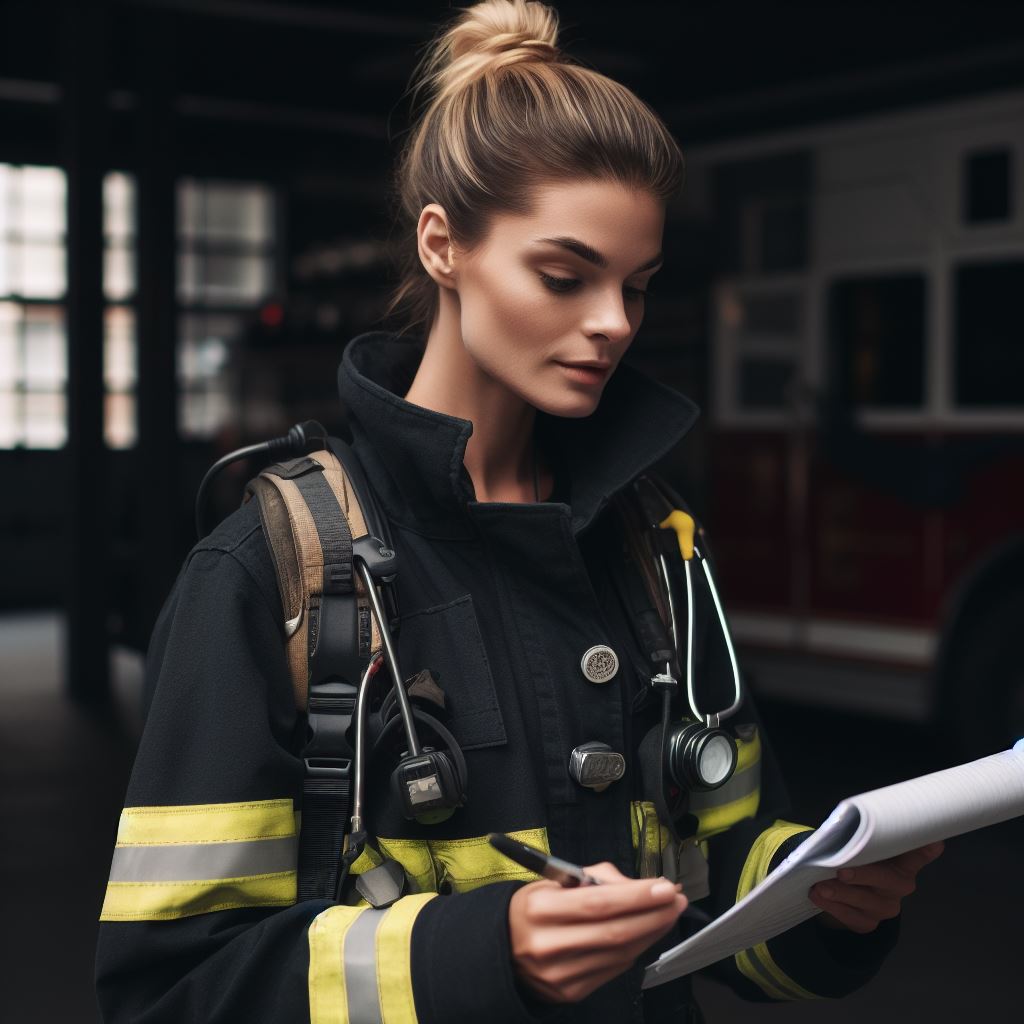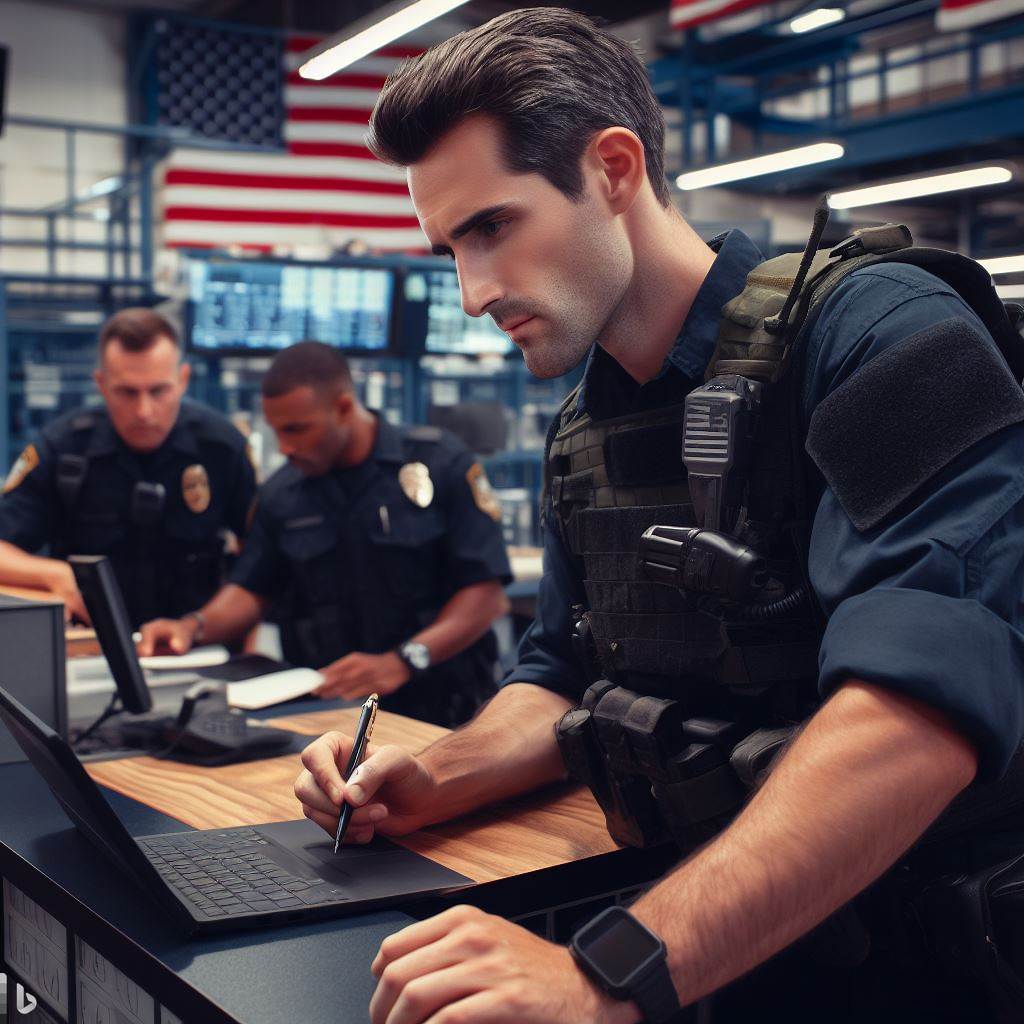Introduction
A. Overview of the Topic
The collaboration between U.S. firefighters and Emergency Medical Technicians (EMTs) is a dynamic alliance crucial for public safety.
It goes beyond traditional boundaries, exemplifying a unified front in emergency response.
B. Importance of the Relationship
- Seamless Emergency Response: The synergy between firefighters and EMTs ensures a swift and effective response to emergencies, be it fires or medical crises.
- Comprehensive Skill Sets: Firefighters bring unique skills, while EMTs contribute medical expertise, creating a comprehensive emergency support system.
- Life-Saving Partnerships: Their symbiotic relationship directly translates to saved lives, emphasizing the vital importance of this collaboration.
- Efficiency in Crisis Management: By working hand-in-hand, these professionals enhance crisis management, proving that the whole is indeed greater than the sum of its parts.
This section will delve into the intricacies of this partnership, exploring its evolution, challenges, and the shared goal of ensuring public safety in the face of adversity.
Roles and Responsibilities of Firefighters
A. Firefighters’ primary duties
- Firefighters are highly trained professionals who respond to various emergencies and crisis situations.
- They are responsible for extinguishing fires and rescuing individuals trapped in dangerous situations.
- Firefighters also provide emergency medical services, such as administering first aid and CPR.
- They conduct thorough inspections of buildings to ensure compliance with fire safety regulations.
- In addition, firefighters educate the public on fire prevention and safety measures.
Firefighters play a pivotal role in ensuring the safety and well-being of communities.
Their primary duties encompass a wide range of responsibilities, making them indispensable during emergencies.
B. Specific tasks firefighters perform during emergencies
- Firefighters assess the situation and determine the best course of action to combat the fire.
- They connect hoses to hydrants, operate pumps, and spray water or extinguishing agents to suppress the flames.
- Firefighters search for trapped individuals and carry them to safety, often putting their own lives at risk.
- If necessary, they enter burning buildings using specialized equipment to rescue victims.
- Firefighters also provide immediate medical assistance to injured individuals at the scene.
One of the main tasks firefighters undertake is extinguishing fires.
Whether it be structural fires or wildland fires, firefighters utilize their extensive training to combat these dangerous situations.
They must swiftly assess the severity of the fire and devise an effective strategy for extinguishing it.
Connecting hoses to hydrants, operating pumps, and spraying water or extinguishing agents are just a few of the tasks they perform to suppress the flames.
However, firefighting is not solely about extinguishing fires. Firefighters also rescue individuals trapped in perilous circumstances.
They conduct search and rescue operations, putting their own lives at risk to save others. Using specialized equipment, firefighters enter burning buildings to extract victims, ensuring their safe evacuation.
Furthermore, they provide immediate medical assistance to injured individuals at the scene, acting as first responders until additional medical personnel arrive.
In addition to firefighting and rescue operations, firefighters have a responsibility for emergency medical services.
They are trained in administering first aid, performing CPR, and addressing various medical emergencies. This allows them to provide crucial medical assistance until paramedics or other medical professionals can take over.
Firefighters also play a vital role in fire prevention. They conduct thorough inspections of buildings to ensure compliance with fire safety regulations.
By educating the public about fire prevention measures, they aim to reduce the occurrence of fires and raise awareness about fire safety practices.
C. Importance of their quick response time
- Firefighters’ quick response time is crucial in minimizing the damage caused by fires or emergencies.
- Reducing response time allows firefighters to arrive at the scene promptly, preventing further escalation.
- Their swift actions can save lives, reduce property damage, and protect the environment.
- Quick response times also ensure that injured individuals receive prompt medical attention, increasing their chances of survival.
- Efficient response times exhibit the professionalism and dedication of firefighters in serving the community.
Quick response time is of paramount importance for firefighters.
The faster they can reach the scene of an emergency, the better their chances of minimizing damage and saving lives.
This rapid response time is essential in preventing the escalation of fires, limiting property damage, and safeguarding the environment.
Additionally, quick response times ensure that injured individuals receive immediate medical attention, significantly improving their chances of survival.
The ability of firefighters to respond swiftly demonstrates their professionalism and dedication to serving the community.
Their constant readiness, rigorous training, and selfless approach are key components in maintaining public safety.
As first responders, firefighters are essential in preserving lives and property during emergencies.
Roles and Responsibilities of EMTs
A. EMTs’ Primary Duties
- EMTs are trained professionals who provide immediate medical assistance in emergency situations.
- They assess patients’ conditions, administer necessary treatments, and transport them to medical facilities.
- EMTs are responsible for monitoring vital signs, providing CPR, and managing various types of injuries.
- They communicate with healthcare professionals and ensure patients receive proper care.
- EMTs also document all interventions and observations accurately for medical records.
B. Tasks EMTs Perform During Medical Emergencies
- EMTs respond quickly to 911 calls and arrive at the scene of accidents, disasters, or medical crises.
- They assess the patient’s condition, checking for responsiveness, breathing, and pulse.
- EMTs provide immediate care, such as administering oxygen, controlling bleeding, or stabilizing fractures.
- They immobilize the patient using spinal boards, stretchers, or other necessary equipment.
- EMTs carefully communicate with patients to gather medical history and information about symptoms.
C. Importance of Their Medical Expertise
- EMTs possess extensive knowledge of medical procedures and emergency protocols.
- Their expertise allows them to make critical decisions and provide life-saving interventions.
- EMTs are trained to handle a wide range of medical emergencies effectively and efficiently.
- They can recognize life-threatening conditions and quickly initiate appropriate treatments.
- The medical expertise of EMTs ensures that patients receive immediate care before reaching the hospital.
EMTs play a crucial role in the healthcare system, working alongside firefighters to provide emergency medical services.
Their primary duties involve quickly responding to emergency calls and providing immediate medical assistance.
EMTs assess patients’ conditions, administer necessary treatments, and ensure they are safely transported to medical facilities.
Their tasks during medical emergencies include assessing vital signs, providing immediate care, and immobilizing patients when appropriate.
EMTs’ medical expertise is of utmost importance as it enables them to make critical decisions, recognize life-threatening conditions, and initiate life-saving interventions.
With their extensive knowledge and training, EMTs ensure patients receive immediate care and support prior to hospitalization.
Read: The Training Rigor: Preparing for Combat & Peacekeeping

Collaboration Between Firefighters and EMTs
A. How the two professions often work together
In the field of emergency response, collaboration between firefighters and EMTs is crucial for ensuring the safety and well-being of individuals in need.
These two professions often work together seamlessly, combining their unique skills and expertise to provide efficient and effective care.
Firefighters and EMTs frequently encounter situations where their collaboration is essential.
For instance, in a major fire incident, firefighters are responsible for extinguishing the flames and preventing further damage.
Meanwhile, EMTs are focused on treating any injured individuals and providing necessary medical care.
Without cooperation between the two, the overall response and recovery efforts would be hindered, potentially leading to more significant harm and loss of life.
B. Scenarios where their collaboration is crucial
To enhance collaboration and ensure seamless teamwork, training programs and joint exercises are conducted regularly.
These initiatives provide an opportunity for firefighters and EMTs to familiarize themselves with each other’s roles and responsibilities.
By understanding the capabilities and limitations of both professions, they can better coordinate their efforts and enhance their overall effectiveness.
C. Training programs and joint exercises to enhance teamwork
Joint training exercises often simulate real-life scenarios, allowing firefighters and EMTs to practice working together in high-stress situations.
For example, they may participate in drills that involve rescuing individuals from a burning building while providing immediate medical attention.
These exercises not only improve communication and coordination but also foster mutual trust and respect between the two groups.
Transform Your Career Today
Unlock a personalized career strategy that drives real results. Get tailored advice and a roadmap designed just for you.
Start NowMoreover, training programs focus on enhancing cross-training opportunities.
Both firefighters and EMTs receive training in basic medical procedures such as CPR and first aid.
This enables firefighters to provide immediate medical care on the scene before the arrival of EMTs.
In turn, EMTs are trained in basic fire suppression techniques, allowing them to assist firefighters in emergency situations where fires pose a threat to the safety of individuals.
Collaboration between firefighters and EMTs extends beyond emergency response situations. They often work together to educate and raise awareness within their communities.
Joint public outreach programs, such as fire safety demonstrations and health fairs, aim to promote safety and prevention methods among the general public.
By combining their knowledge and resources, firefighters and EMTs can effectively deliver key messages and ensure community well-being.
Most importantly, the relationship between U.S. firefighters and EMTs is built on collaboration and teamwork.
Their combined efforts are crucial in emergency response situations and help to protect lives and property.
Through training programs, joint exercises, and community outreach initiatives, these professionals continue to enhance their collaboration and improve their ability to provide efficient and effective care.
The partnership between firefighters and EMTs serves as a shining example of the power of teamwork in saving lives and ensuring public safety.
Read: Deployment Dynamics: Understanding Overseas Assignments
Challenges and Rewards of the Relationship
A. Challenges Faced by Firefighters and EMTs while Working Together
- High-stress environments: Both firefighters and EMTs face intense pressure when dealing with emergencies.
- Different priorities: Firefighters focus on containing and extinguishing fires, while EMTs prioritize patient care.
- Lack of understanding: Each profession requires distinct training and expertise, leading to misunderstandings.
- Limited resources: Both firefighters and EMTs often have to work with limited equipment and personnel during emergencies.
- Physical demands: The nature of firefighting and providing medical assistance can be physically demanding, leading to fatigue and injuries.
- Time sensitivity: Both firefighters and EMTs need to act quickly and efficiently, putting pressure on decision-making.
B. Importance of Effective Communication and Coordination
- Seamless teamwork: Effective communication between firefighters and EMTs ensures coordinated efforts during emergencies.
- Clear instructions: Precise communication ensures that tasks are delegated appropriately and performed without confusion.
- Safety enhancement: When firefighters and EMTs communicate well, the risk of accidents or mistakes decreases significantly.
- Efficient resource management: Coordinated efforts prevent wasting time, resources, and overlapping tasks.
- Improved patient outcomes: Effective communication and coordination lead to timely and appropriate medical interventions.
C. Mutual Support and Camaraderie among the Two Professions
- Shared experiences: Both firefighters and EMTs face challenging situations together, fostering a strong bond and understanding.
- Emotional support: The shared understanding and empathy between firefighters and EMTs create a support system in times of stress.
- Team unity: Firefighters and EMTs often work side by side, relying on each other’s skills and trust to ensure success.
- Brotherhood/sisterhood: The close-knit nature of firefighting and emergency medical services builds lifelong relationships.
- Camaraderie outside of work: Firefighters and EMTs often engage in social activities together, strengthening their connection.
In essence, the relationship between firefighters and EMTs is vital in providing efficient and effective emergency services.
Despite the challenges they face, such as high-stress environments and different priorities, these professionals can overcome obstacles through effective communication and coordination.
The importance of seamless teamwork cannot be overstated, as it enhances safety, resource management, and ultimately improves patient outcomes.
Furthermore, the mutual support and camaraderie between firefighters and EMTs create a strong bond that extends beyond their professional lives.
These professionals not only rely on each other during emergencies but also form lifelong friendships, making the challenges they face worthwhile.
Read: Top U.S. Military Bases: Key Locations & Their Importance
Discover More: Financial Aspects: Firefighter Salaries Across States
Success Stories and Contributions
A. Real-life examples showcasing successful collaboration between firefighters and EMTs
- In a recent house fire, firefighters and EMTs worked seamlessly together to rescue a family.
- During a car accident, firefighters and EMTs joined forces to extricate a trapped passenger.
- At a medical emergency, firefighters and EMTs provided immediate life-saving interventions.
- Firefighters and EMTs partnered to perform a successful high-angle rescue of a stranded hiker.
- In a hazardous materials incident, firefighters and EMTs cooperated to minimize risks and treat victims.
B. Impact of their teamwork on emergency response outcomes
- The collaboration between firefighters and EMTs significantly reduces response time during emergencies.
- Joint training allows firefighters and EMTs to coordinate efforts for more effective and efficient rescue operations.
- Working together, firefighters and EMTs provide comprehensive care and support to victims with different needs.
- Their combined expertise enhances the chances of survival and positive outcomes for individuals in distress.
- The proactive teamwork between firefighters and EMTs minimizes chaos and organizes emergency scenes better.
C. Gratitude and recognition for their contributions to public safety
- We should acknowledge the dedication of firefighters and EMTs in protecting our communities.
- The selfless commitment of these professionals deserves our utmost admiration and gratitude.
- Their heroic efforts in the face of danger contribute to the overall safety and well-being of society.
- We must regularly express our appreciation for the sacrifices made by firefighters and EMTs.
- They are the unsung heroes who often risk their lives to ensure our safety in times of crisis.
Read: Military Benefits: From Healthcare to Education Aid
Discover More: Security Guard Etiquette: Interacting with Public in the USA
Conclusion
A. Key points discussed in the blog post
- The relationship between U.S. firefighters and EMTs is crucial for saving lives and ensuring public safety.
- Firefighters and EMTs work hand in hand during emergencies, relying on each other’s skills and expertise.
- The collaboration between firefighters and EMTs enables prompt response and efficient medical care.
- Both professions require extensive training, dedication, and the ability to work well under pressure.
- Firefighters and EMTs face various challenges, including physical risks, emotional stress, and exposure to hazardous materials.
B. Vital nature of the relationship between firefighters and EMTs
The partnership between firefighters and EMTs is the backbone of emergency response systems, ensuring that the public receives immediate assistance and medical aid when needed.
The harmony and coordination demonstrated between these two professions are crucial for saving lives.
C. Call-to-action
It is essential for society to recognize and appreciate the critical role that firefighters and EMTs play in safeguarding our communities.
By supporting these professionals through funding, public recognition, and respect, we can ensure they have the necessary resources and motivation to continue their life-saving work.
Let’s stand together in acknowledging the dedication and sacrifices made by firefighters and EMTs, the heroes who protect us in our most vulnerable moments.
[E-Books for Sale]
The Big Book of 500 High-Paying Jobs in America: Unlock Your Earning Potential
$19.99 • 500 High-Paying Jobs • 330 pages
Explore 500 high-paying jobs in America and learn how to boost your career, earn more, and achieve success!
See All 500 High-Paying Jobs of this E-Book
1001 Professions Without a Degree: High-Paying American Jobs You Can Start Now
$19.99 • 1001 Professions Without a Degree • 174 pages
Discover 1001 high-paying jobs without a degree! Unlock career tips, skills, and success strategies for just $19.99!




